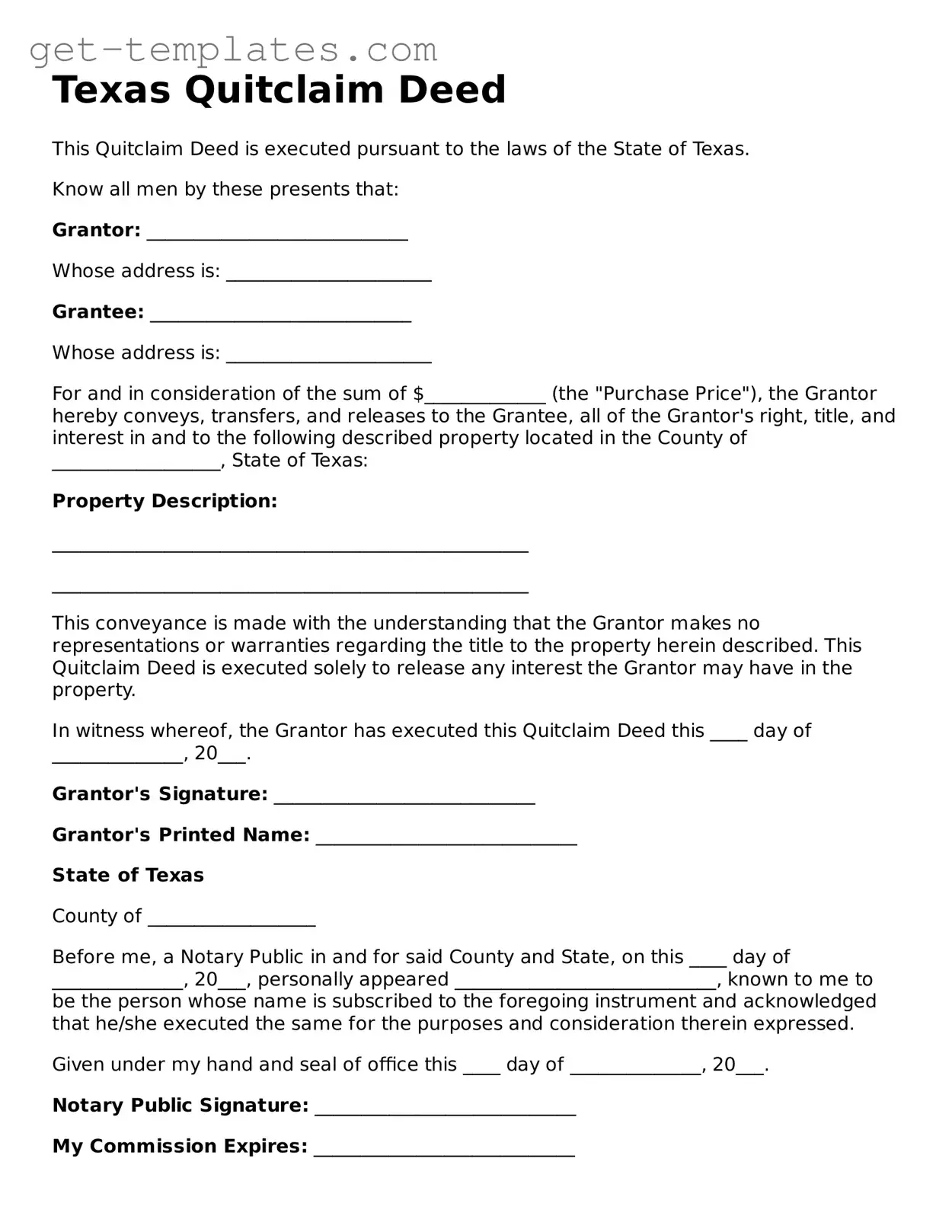Texas Quitclaim Deed
This Quitclaim Deed is executed pursuant to the laws of the State of Texas.
Know all men by these presents that:
Grantor: ____________________________
Whose address is: ______________________
Grantee: ____________________________
Whose address is: ______________________
For and in consideration of the sum of $_____________ (the "Purchase Price"), the Grantor hereby conveys, transfers, and releases to the Grantee, all of the Grantor's right, title, and interest in and to the following described property located in the County of __________________, State of Texas:
Property Description:
___________________________________________________
___________________________________________________
This conveyance is made with the understanding that the Grantor makes no representations or warranties regarding the title to the property herein described. This Quitclaim Deed is executed solely to release any interest the Grantor may have in the property.
In witness whereof, the Grantor has executed this Quitclaim Deed this ____ day of ______________, 20___.
Grantor's Signature: ____________________________
Grantor's Printed Name: ____________________________
State of Texas
County of __________________
Before me, a Notary Public in and for said County and State, on this ____ day of ______________, 20___, personally appeared ____________________________, known to me to be the person whose name is subscribed to the foregoing instrument and acknowledged that he/she executed the same for the purposes and consideration therein expressed.
Given under my hand and seal of office this ____ day of ______________, 20___.
Notary Public Signature: ____________________________
My Commission Expires: ____________________________
